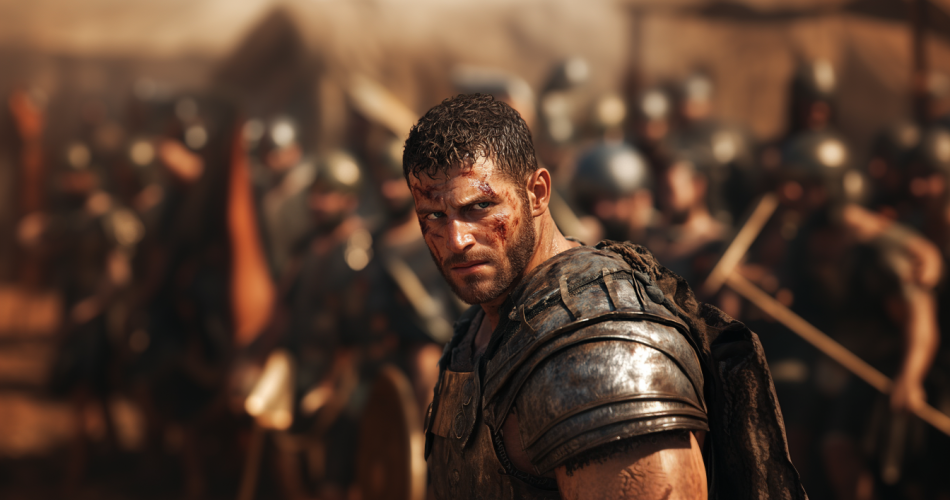Ever wondered about the Spartacus slave revolt that kicked off one of history’s biggest underdog uprisings? Long before the Haitian Revolution took to the streets, Spartacus led one of the first massive slave revolts against the Roman Republic.
Born in ancient Thrace (modern-day Turkey, Bulgaria, and Greece), Spartacus started as a soldier in the Roman army. But after falling out with Rome (maybe for rebelling or just ditching the army), he was sold into slavery.
Sent to train as a gladiator, he launched a rebellion against the Roman Republic. This bold breakout sparked the fierce Spartacus slave revolt, known as the Third Servile War, one that kept Rome on edge for years.
Though Rome eventually squashed the uprising, Spartacus’s legacy lives on as a symbol of the fight against oppression and the power of the people. His story isn’t just ancient history—it’s a reminder of what can happen when ordinary people stand up for freedom!
How did the Spartacus Rebellion Start?

So, how did Spartacus, a former gladiator, end up striking fear into the mighty Roman Republic? Believe it or not, Spartacus kicked off his rebellion in a wild breakout with just a few stolen kitchen knives.
After, he and around 70 other gladiators from their gladiator school in the Roman city of Capua fought their way to freedom. They advanced to a more defendable position on Mount Vesuvius and waited for more slaves to join them. Soon, their number reached a whopping 70,000 slaves.
Every time the rebels took down a Roman force, they’d strip their camps of weapons and supplies, leaving only the ash behind. Word of Spartacus’s revolt success spread fast, and slaves from nearby regions began fleeing their masters to join him. Soon, his ranks were swelling with even more slaves, turning his once-small band of rebels into a full-blown army of 120,000 soldiers.
The Romans were slow to realize it, but Spartacus was no ordinary runaway slave. He was about to shake up the republic and write his name in history.
Why Did He Initially Succeed Against Rome?
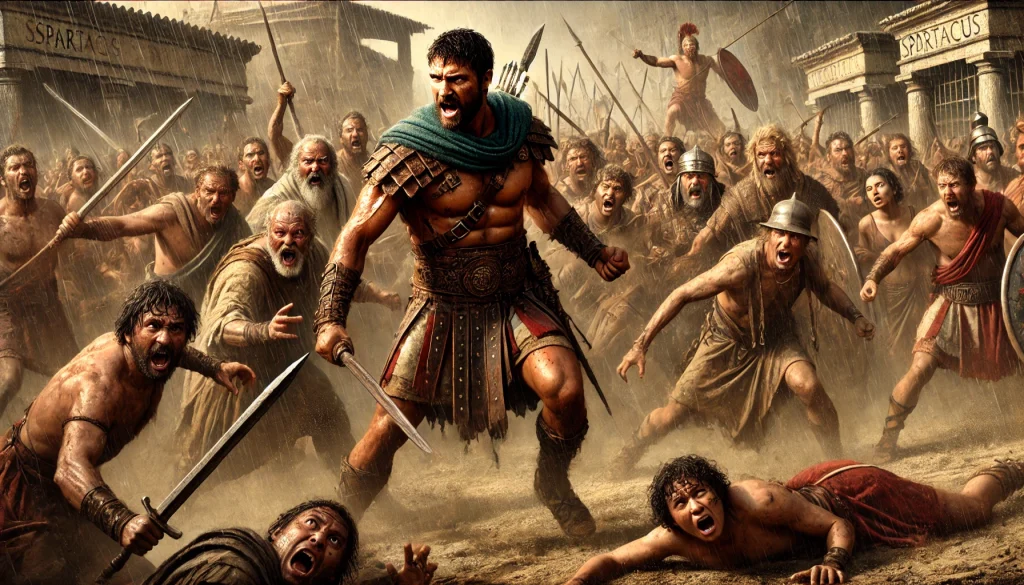
When Rome sent a ragtag crew of untrained soldiers under the Roman General Glaber to deal with Spartacus, they thought it’d be an easy win. After all, how much trouble could a bunch of runaway slaves really cause? Glaber confidently surrounded Spartacus and his army on the mountain, planning to starve them out.
However, Spartacus wasn’t planning on sitting around! The mountain was covered with thick vines, and Spartacus had his men weave them into makeshift ropes. They used these ropes to climb down the cliff and Glaber’s men from behind.
Next up, Rome sent Publius Varinus, who split his troops, hoping for a sneaky pincer move. But whatever Varinus had in mind ended up as a colossal failure. His divided army didn’t stand a chance and was completely wiped out by Spartacus’ forces.
The Roman Senate finally realized the power of Spartacus’s battle tactics and realized they were up against a serious force.
Suddenly, this wasn’t just a band of rebels—they were a full-blown threat to Rome. The consuls Publicola and Clodianus were now called in to face Spartacus, but after two brutal defeats, Rome knew they had a massive problem on their hands.
Why did Spartacus not March on Rome?
Despite all his epic wins against the Roman Army, Spartacus never actually planned to march on Rome. That’s right—no visions of storming the grand city or challenging the Senate. Historians have long debated why Spartacus didn’t attack Rome. Was it self-doubt? Or maybe his massive, mismatched army couldn’t quite agree on what to do next.
The truth? Probably a bit of both! Spartacus knew that, despite his growing power, he couldn’t really take on Rome’s full might. His original plan was a lot simpler: lead his troops up to the Alps, say goodbye, and let everyone head home a free man, whether to Thrace, Gaul, or beyond. But with so many victories under their belts, the men got bold—maybe too bold—and decided, ‘Why stop now?’ So they went on a wild rampage across Italy.
Spartacus himself, though, had his doubts. He believed that without a solid ally in another city, his army of freed slaves wouldn’t stand a chance against Rome, no matter how fierce they were feeling.
How Crassus and Pompey Changed the Tide
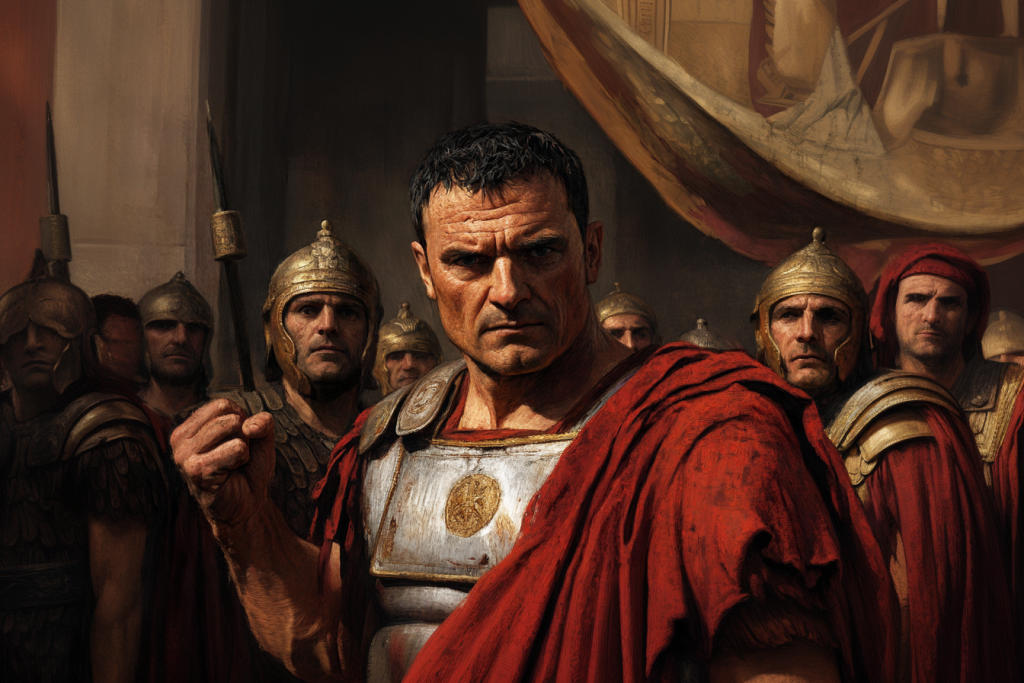
To finally end Spartacus’ rebellion, the Senate called in Marcus Licinius Crassus, a distinguished Roman general who was not messing around. The first thing Crassus did was carry out the old Roman practice of decimating legions that had previously lost to Spartacus. This bold move not only instilled fear in the soldiers but also let them know that Crassus would not take anything less than an absolute victory.
The showdown was set to go down at the southern tip of Italy, in Bruttium (now Calabria in southern Italy), where Spartacus had a clever plan to team up with Sicilian pirates for a quick escape to freedom in Sicily.
However, Spartacus finds himself betrayed when the pirates never show up! Crassus seized the moment, throwing up a wall and effectively trapping Spartacus and his men, with only the open sea behind them. It was a classic Roman strategy against Spartacus—try to starve them out and break their spirits.
At the same time, Pompay was combing back from his successful campaign against the pirates of the Mediterranean Seas. When he arrived in the area, he decided to join in on the action.
Spartacus’s Slave army stood no chance. They were soundly defeated by Crassus on the field. A large portion of the slaves abandoned Spartacus and fled, only to fall into the hands of Pompay, who whipped them out.
Spartacus’s Defeat at the Battle of the Silarius River
The last, decisive clash that sealed the Roman victory over Spartacus and his men is known as the Battle of the Silarius River. Crassus didn’t hold back, putting up an intense 60-kilometer line of walls and ditches to trap Spartacus and his army. Spartacus wasn’t having it, though. He launched wave after wave of direct assaults on the Romans, causing some serious damage to their defences.
Finally, Spartacus and his men charged at Crassus’ legions, managing to cut down scores of Roman soldiers, even as their own numbers dwindled. In a bold move, Spartacus fought to reach Crassus himself, taking out two centurions on his way.
But then, fate struck, and he was hit in the leg with a javelin, forcing him to his knees. Still, Spartacus wasn’t one to quit; even with his injury, he kept fighting until he was ultimately overpowered, meeting his end in battle.
The Brutal Punishment of Spartacus’ Followers
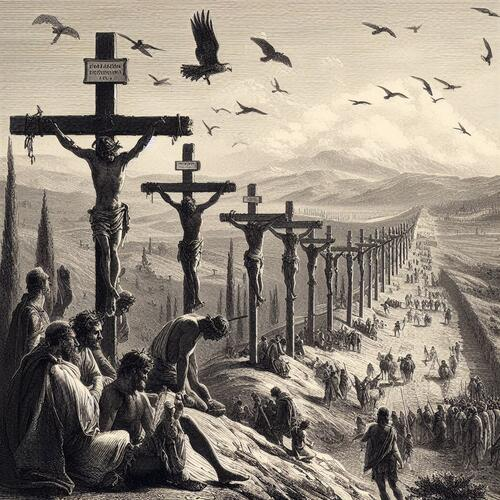
The aftermath of Spartacus’s rebellion was nothing short of brutal. A massive clash where those who fought alongside Spartacus till the very end were surrounded and died in a chaotic frenzy. It was such a bloodbath that they lost count of the bodies! Spartacus himself was never found, leaving his legend shrouded in mystery.
As the chaos unfolded, some of his soldiers scrambled for the mountains, only to be hunted down by Crassus. They split into four groups, fighting until they all fell—except for a mere 6,000 who were captured. A grim fate awaited those unfortunate 6,000 men: crucifixion along the Alppian road. Their bodies were left to rot for years. It was a gruesome reminder of the rebellion’s end and a chilling warning for anyone thinking about rising up in the future!
Read Also:
How Hannibal killed 50,000 Romans at the Battle of Cannae.
Battle of Legnica: When European Knights Faced the Mongols.
Attila the Hun Vs Ghengis Khan; Who was the best Horse Archer General?
Strategic Mistakes of Spartacus‘ Army
So what mistake did Spartacus and his army make? Could they have won if they did things a little bit differently?
The truth is that Spartacus and his army were never close to defeating the Roman Republic. However, they were so close to tasting freedom as they marched toward the Alps. But here’s where things went sideways—his troops, filled with bravado, decided to ignore his wishes and opted for a direct confrontation with the entire Roman army instead of making their escape!
As fate would have it, when the heat was on during the final battle at Bruttium, Spartacus faced yet another hiccup. He couldn’t get his men across the sea to Sicily thanks to a botched promise with some pirates.
That one mistake, combined with some soldiers bailing out to confront Crassus directly, sealed his fate. So, if you’re ever pondering why Spartacus lost, just remember—sometimes, confidence can be a double-edged sword, especially when it leads you straight into the fire!
Spartacus’ Struggle Against a Stronger Roman Army
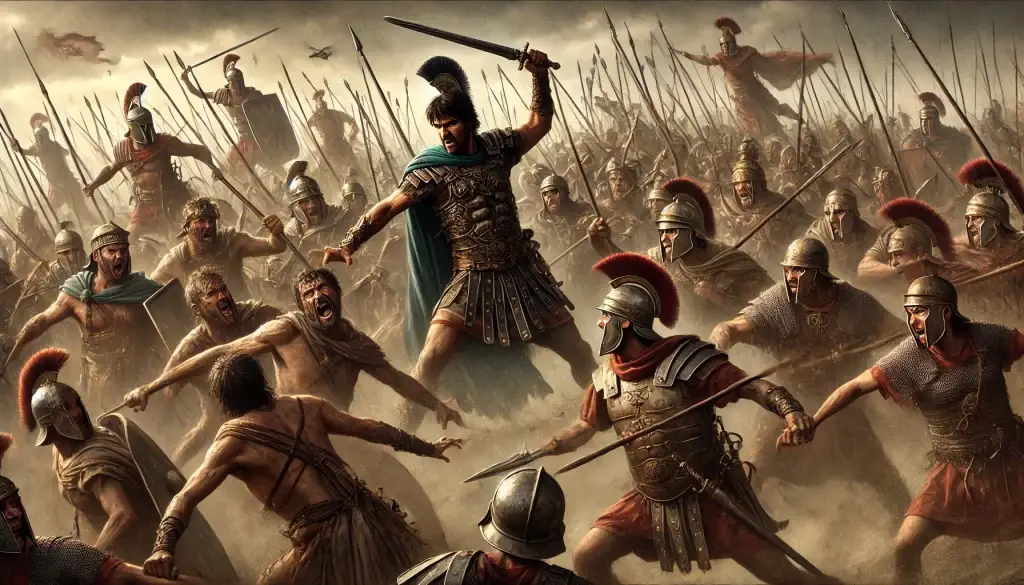
Spartacus’ army may have swelled in numbers, but winning a battle takes more than numbers. Most of these men weren’t a finely-tuned fighting machine like the Roman legions. Although Spartacus himself knew his way around Roman military tactics from his days as a soldier, and his core crew of gladiator buddies were tough as nails. The runaway slaves that kept flocking to his side, were not very good soldiers.
These new recruits didn’t come with much battle experience, and most had only the courage to flee their masters. So, Spartacus was left with a massive but untrained and patchily equipped crowd, far from the elite force he needed.
To top it off, his army’s gear was limited to whatever they could loot from victorious battles. But beyond the lack of weapons, there was something Spartacus really needed: true allies, and not just any allies. To face Rome, Spartacus needed the backing of other powerful city-states. This was the kind of strategic support that could challenge the massive Roman war machine.
Without those strong alliances, his army was left exposed, making Spartacus’ concerns about their chances of survival tragically accurate. Facing Rome alone was like charging into a storm with an umbrella… it just wasn’t going to work out!
10. Frequently Asked Questions (FAQs)
- Why didn’t Spartacus march on Rome?
Spartacus never intended to conquer Rome. His plan was simple: lead his men to the Alps, where they could disperse and escape Roman rule. However, after repeated victories, his troops grew bold and chose to stay in Italy.
- How did Marcus Licinius Crassus defeat Spartacus?
Crassus used harsh discipline and smart tactics. He trapped Spartacus by building a wall and trench system, limiting their supplies. Spartacus fought hard to break through but was ultimately defeated in the final Battle of the Silarius River.
- What was Spartacus’s biggest mistake?
Turning back from the Alps was Spartacus’s greatest misstep. He originally intended to escape but stayed due to pressure from his men, trapping him in Italy with fewer options.
- How many slaves followed Spartacus?
Starting with just around 70 men, Spartacus’s army grew to around 120,000 runaway slaves. This massive force shook Rome but was ultimately hard to manage and poorly equipped.
- What happened after Spartacus died?
Following Spartacus’s death, 6,000 of his captured followers were crucified along the Appian Way as a warning to others. But even though Rome crushed the rebellion, Spartacus became a lasting symbol of resistance.
